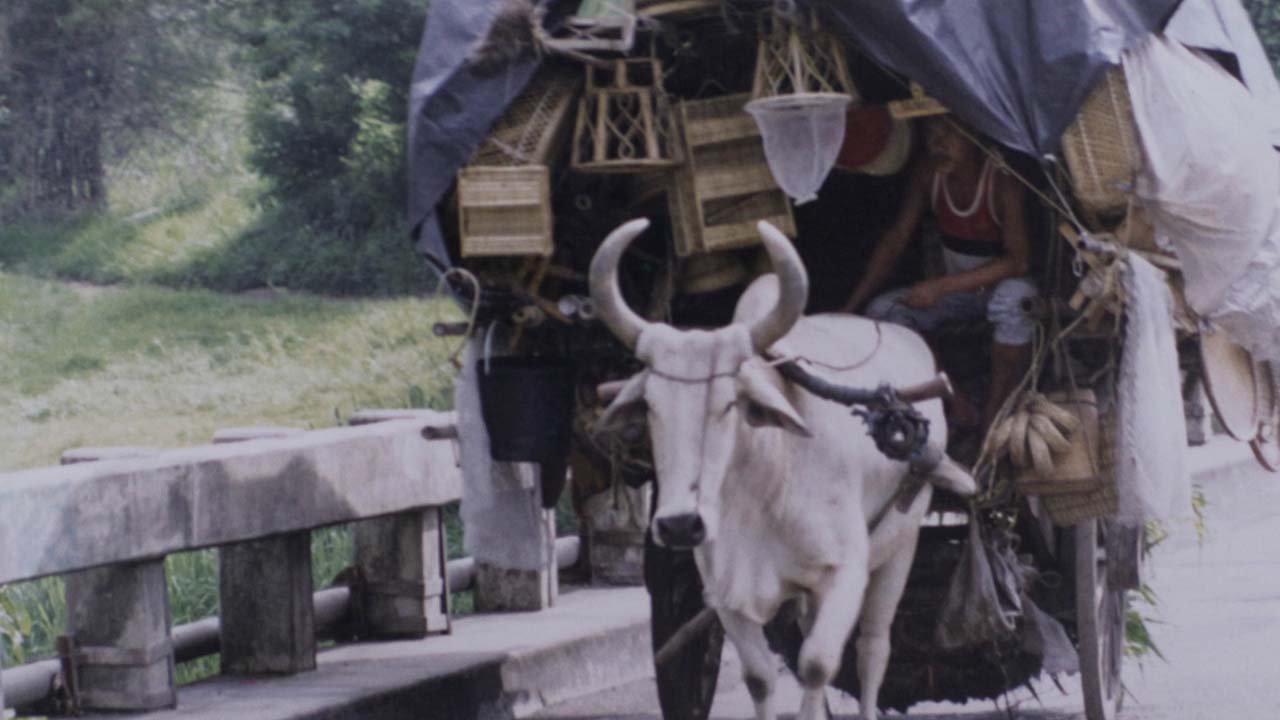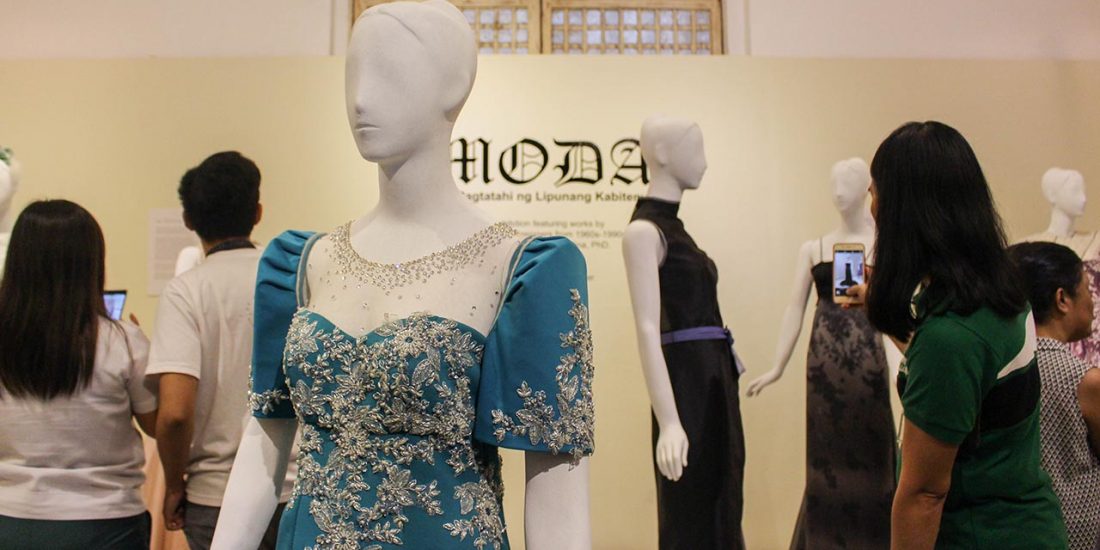Lagalag
Flash back to the 60s to the 90s, trekking the roads was one of the most innovative forms of commerce the pre-technological Philippines had ever seen: roaming vendors. Travelling from town to town with their cows or carabaos, they carry with them a variety of walis tambo, duyan, and other similar crafts. Back then, business flourished for about 30 years and their products were high in demand.
Fast forward to the 2000s until today, these wandering peddlers have turned obsolete, together with the rise of technology in the travel and trade industry. “Viajeros,” they’re called—old school merchants riding cattle-drawn caravans. Little by little, their numbers have dwindled, and whoever is left of them today are the last remnants of a dying breed.
A relic of the past
Hailing from Pangasinan, viajeros are spread across the land carrying local-made goods from their home province. Here in Cavite, two viajeros are stationed, setting up their base of operations in Dasmariñas, on the roadside near what the locals call “bagong palengke.”
One of the viajeros, Simeon Velasquez, or Kuya Marvin, spends his idle afternoon leisurely sitting on the gutter accompanied by his colleague, Rodrigo Perez, and his trusty canine partner Coco, an aspin, with his white cow grazing at a nearby pasture. Like most viajeros, Kuya Marvin inherited his caravan from his forefathers. Woven baskets, hammocks, and wooden chairs are tied and strewn across the surface of his caravan. The interior, filled with basic household items, has served as his makeshift home for about 25 years now.
At 45 years old, Kuya Marvin had spent more than half of his life with a job he didn’t dream of at first. Originally, he had planned to graduate from college and at least work in a factory. But at the young age of 20 having only finished high school, Kuya Marvin opted to become a viajero due to financial demand. Thus began his journey as a wandering merchant.
Away from home
You wouldn’t notice from Kuya Marvin’s friendly demeanor and welcoming personality, but the life of a viajero isn’t exactly dream job material. Being a viajero means absorbing all the noise and smoke of the highways while having nothing but thin, galvanized iron sheets as a meager cover from the merciless midday sun.
To top it off, imagine spending every day like this when you’re roughly 260 kilometers away from your hometown. Riding his caravan, it takes Marvin an entire month for a one-way trip to Cavite. Within the province, he and his partner decide where to travel and stay for the next two to three days. Sometimes they’re in Imus, Molino, or Silang, but nowhere further, since Tagaytay established an ordinance that rendered the city off-limits to slow-moving, overloaded caravans.
“Malungkot din. Malayo sa pamilya e,” he shares.
A viajero only gets to see his family every two to three months, and only for a couple days each time. When he does, he leaves his caravan in the care of his colleague, and takes public transport to Pangasinan and stays for a couple days during special occasions. And when you can only go home around five times a year, you tend to miss a lot. Kuya Marvin had celebrated last Christmas and New Year in Cavite, and the bitter reality is that, for a viajero, these things happen so often that they inevitably end up getting used to it.
Even after two and a half decades of a tiresome life on the road, Kuya Marvin says that he doesn’t plan on retiring anytime soon—or rather, he can’t. “Siguro matagal pa, kasi grade six pa lang ‘yong bunso ko, e. Pagtatapusin ko pa [ng pag-aaral].”
His wife works a temporary job washing dishes in a canteen and at the same time taking care of their house and children, so despite the meager pay, his job still brings most of the income in their family. Until his youngest graduates from college, it’s safe to say that Kuya Marvin will continue being a viajero for a while.
The end of the line
Throughout Kuya Marvin’s journey, he and his colleague have gone through all sorts of life experiences. They left home 25 years ago with 49 other viajeros, passing through Manila, Bulacan, and even Laguna and Batangas before deciding to remain in Cavite. They cook their meals with their portable lutuan and take baths outdoors every day of their wandering lives, throughout the extreme hot and cold seasons, struggling to find shelter from the occasional storms. Their cows have been injured—sometimes stolen—and their caravans that are generations older than them have been broken and repaired multiple times. Their sales are unstable, relying on the chance that ordinary people living their busy daily lives would even stop to look at them and their merchandise, and as if that wasn’t bad enough, lowlifes often prey on their unsecured caravans and steal from them while they sleep.
Out of the 50 viajeros that once roamed Pangasinan 25 years ago, only four of them are left
But it’s not a job completely devoid of reward. Working as a viajero, Marvin’s eldest managed to graduate with a degree in agriculture, and his youngest is now steadily attending school. He had found a lifelong companion, Coco, while he was vending in Kawit. And though he’s away most of the time, their family remains intact.
Still, the life of a viajero is something Kuya Marvin does not want his children to inherit. “Wala na. Hindi ko na rin puwedeng [ipamana] sa anak ko [itong pagiging viajero] kasi mahirap. Kaya nagtiya-tiyaga ako para makapagtapos sila ng pag-aaral.”
Out of 50 viajeros that once roamed Pangasinan 25 years ago, only four of them are left. Two in Cavite, and the other two in Antipolo, according to Kuya Marvin. Due to its highly demanding lifestyle, and with the introduction of modern viajeros riding motorcycle-driven caravans, they are likely the last generation of traditional merchants with cows and carabaos.
***
Far gone from their flourishing trade in the latter half of the previous century, traditional viajeros have been beaten by the rapidly changing times. Their outdated form of trade is further burdened by the inadequate pay that doesn’t do their lonesome life justice. So the next time you happen to encounter one, take time to appreciate them, because that time could very well be the last.





